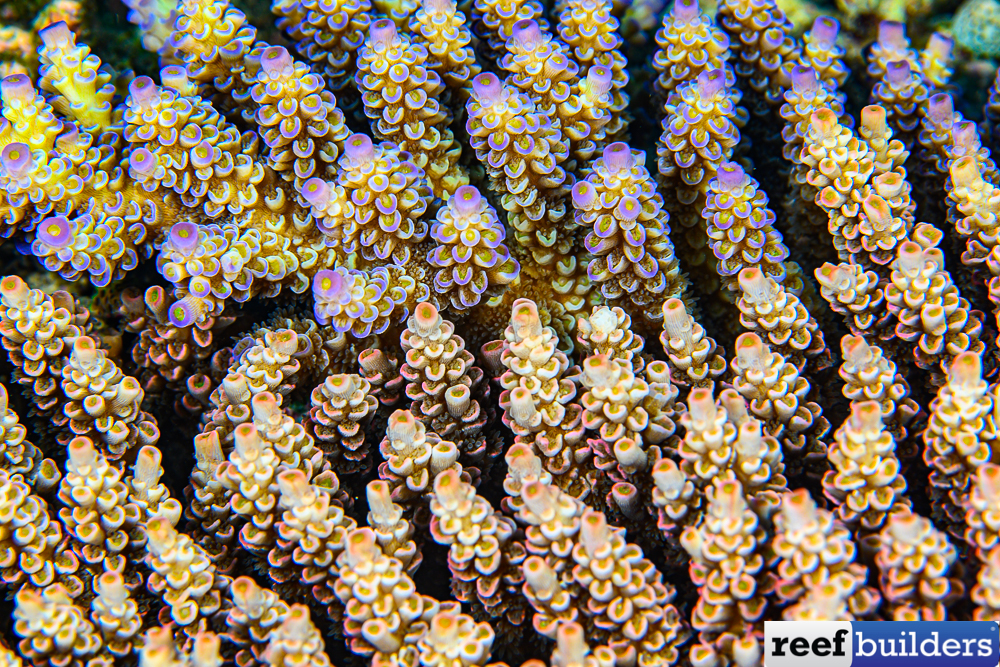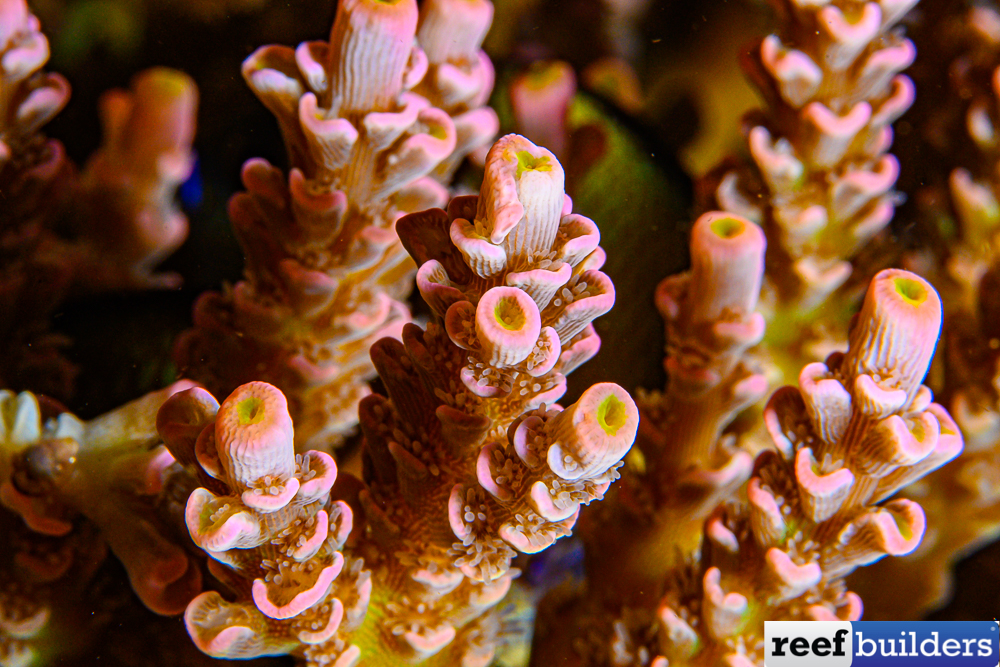With 25 years at the top of the industry, the most popular Acropora in our hobby cannot be dethroned. So what’s so special about it? This coral gives everyone mixed feelings. It has a tendency towards sudden death, but if you can keep it alive it develops crazy coloration!
Tenuis is the ultimate Acropora. The main reason for its success is that it looks good in the ocean, but becomes even better in an aquarium. Developing all sorts of coloration and leading to lots of fancy names.
Everyone has their own cooking recipe for tenuis. It’s a shallow-water species, so it likes very intense lighting. Set blues and UV to their maximum for 10-12 hours a day, cranking the whites up in the middle to 2-4 hours of maximum intensity. Slightly higher alkalinity helps with growth and coloration.

Stability is key to its longevity
The problem with tenuis is its propensity toward sudden death. Overnight RTN is quite a classic, one day it looks great and the next morning, it’s gone! Even though most people can’t pinpoint any single reason in particular, if we dig a little bit, we can usually trace it to water quality swings. KH, temperature, salinity, Ca, Mg… you name it, but like many corals, Acropora tenuis doesn’t like swings, especially in KH, and that’s why they are not the best shippers.
One theory is bacterial population shift. It has been demonstrated that bacterial populations can shift at the same time as water quality. Leading to some kind of bacterial infection. Their sensitivity to instability is probably the reason they don’t do well in newly set-up tanks and should be reserved to mature systems.

A wide range of coloration and pigments
Acropora tenuis exists in a wide range of colorations. Red, Blue, Green… with different hues within the branches, and even on the tips! It’s usually these secondary colors that develop under aquarium conditions. The trick is to focus on the secondary colors instead of the primary color of the colony.



